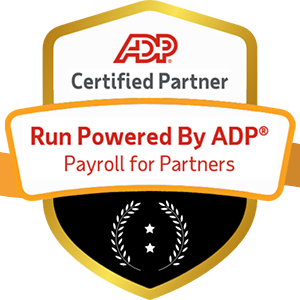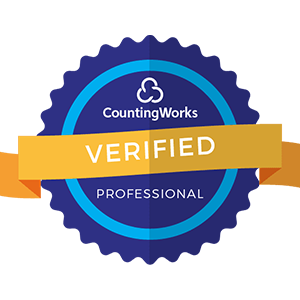
The Virtual Revolution: Early adopters of metaverse workplace technologies report 47% higher employee engagement, 38% faster onboarding, and 65% more effective training outcomes. VR-based learning shows 275% higher confidence levels and 4x better focus than traditional methods. Yet only 12% of organizations have developed metaverse strategies, creating significant first-mover advantages for HR leaders who embrace virtual workplace transformation.
The convergence of virtual reality, artificial intelligence, and cloud computing has reached a tipping point where immersive digital workplaces are transitioning from experimental concepts to practical business solutions. This transformation represents more than technological advancement—it signals a fundamental reimagining of how, where, and when work occurs.
Traditional workplace constraints including geographic limitations, physical infrastructure requirements, and synchronous communication dependencies are dissolving as organizations discover that virtual environments can provide superior collaboration, learning, and engagement experiences compared to both physical offices and conventional remote work arrangements.
The metaverse workplace paradigm enables unprecedented flexibility while maintaining the human connections and cultural cohesion that distributed teams often struggle to achieve. Early implementations demonstrate that carefully designed virtual environments can replicate and even enhance the spontaneous interactions, visual communication, and shared presence that drive organizational effectiveness.
This shift creates strategic imperatives for HR leaders who must navigate the transition from physical and hybrid workplace models to immersive virtual environments that require new policies, practices, and competencies while delivering measurable improvements in employee experience and business outcomes.
Successful metaverse implementations require sophisticated understanding of virtual environment design principles that optimize human interaction, productivity, and well-being within digital spaces.
Virtual workspace architecture leverages psychological principles of spatial cognition to create environments that feel natural and supportive of different work activities. Open collaboration spaces, focused work areas, and social zones can be designed without physical constraints while maintaining intuitive navigation and purpose-specific functionality.
Avatar design and customization enable personal expression and identity formation within virtual environments while ensuring professional appropriateness and accessibility across diverse user populations. Research indicates that avatar embodiment significantly affects self-perception and performance in virtual contexts.
Haptic feedback and spatial audio technologies create sensory richness that enhances presence and engagement while reducing the cognitive fatigue often associated with traditional video conferencing platforms.
Environmental adaptability allows real-time modification of virtual spaces to support different meeting types, work styles, and cultural preferences while maintaining consistency in core functionality and user experience.
Hardware considerations include VR headset compatibility, processing power requirements, and ergonomic factors that affect user comfort during extended work sessions. Current technology limitations around battery life, display resolution, and device weight continue improving rapidly.
Network infrastructure must support high-bandwidth, low-latency connections that enable seamless multi-user experiences without technical glitches that disrupt collaboration and productivity.
Platform integration ensures that metaverse workspaces connect with existing business applications including email, calendar systems, project management tools, and enterprise software to maintain workflow continuity.
Security architectures for virtual environments require new approaches to data protection, user authentication, and access control that address unique risks associated with immersive digital spaces.

The metaverse unlocks learning modalities that are impossible in physical or traditional digital environments, creating opportunities for more effective skill development and knowledge transfer.
Simulation-based training enables employees to practice complex procedures, dangerous operations, or high-stakes interactions in completely safe virtual environments that provide realistic consequences without real-world risks.
Scenario-based learning allows repeated practice of challenging situations with variations that build adaptive expertise rather than rote procedural knowledge. Leadership scenarios, customer interactions, and crisis management can be practiced extensively.
Collaborative problem-solving environments enable teams to work together on virtual prototypes, 3D models, and interactive simulations that enhance understanding of complex concepts while building teamwork skills.
Historical recreation and future modeling capabilities provide context for strategic thinking and decision-making by allowing employees to experience different scenarios and their potential outcomes.
AI-powered tutoring systems within virtual environments can provide individualized guidance and feedback while adapting content difficulty and presentation style to optimize learning outcomes for each user.
Competency tracking through virtual performance monitoring provides objective data about skill development while identifying areas requiring additional focus or alternative learning approaches.
Learning pathway customization enables employees to progress through development programs at optimal paces while exploring specialized tracks that align with career goals and organizational needs.
Social learning facilitation connects learners with peers and mentors within virtual environments that encourage knowledge sharing and collaborative skill development.
Metaverse technologies enable innovative approaches to talent acquisition, development, and retention that address longstanding HR challenges while creating new competitive advantages.
Virtual recruitment events can attract global talent while providing immersive previews of company culture and work environments that help candidates make better-informed decisions about career opportunities.
Skills assessment in virtual environments provides more accurate evaluation of capabilities by observing performance in realistic work simulations rather than relying solely on interviews and traditional testing methods.
Cultural fit evaluation becomes more sophisticated when candidates can experience virtual workplace environments and interact with potential colleagues in natural settings that reveal authentic behavior patterns.
Global talent access expands dramatically when geographic location becomes irrelevant for most work activities, enabling organizations to recruit the best candidates regardless of their physical location.
Continuous performance monitoring in virtual environments provides rich behavioral data about collaboration patterns, communication effectiveness, and task performance that supplements traditional evaluation methods.
Mentoring and coaching relationships can be enhanced through virtual environments that enable more frequent, convenient interactions while providing shared workspaces for collaborative development activities.
Career pathway visualization uses virtual environments to help employees explore different roles and responsibilities while building skills needed for advancement opportunities.
Recognition and reward systems can incorporate gamification elements and virtual achievements that enhance motivation while providing public acknowledgment of contributions and accomplishments.

Successful metaverse workplace implementation requires comprehensive change management that addresses both technological adoption and cultural evolution necessary for virtual collaboration success.
Shared purpose and values must be reinforced through virtual environment design, avatar interactions, and digital rituals that create belonging and connection across distributed teams.
Informal interaction opportunities including virtual coffee spaces, game rooms, and social events help build relationships and trust that support effective collaboration during work activities.
Communication norms for virtual environments require new etiquette guidelines that optimize interaction quality while respecting individual preferences and accessibility needs.
Leadership modeling becomes crucial as executives and managers must demonstrate effective virtual collaboration while championing cultural transformation throughout the organization.
Change readiness assessment evaluates organizational and individual preparedness for metaverse workplace transformation while identifying support needs and potential resistance factors.
Training and support programs ensure that employees develop technical competencies and virtual collaboration skills necessary for success in immersive work environments.
Gradual implementation strategies allow organizations to learn and adapt while building confidence and expertise before full-scale metaverse workplace deployment.
Feedback integration enables continuous improvement of virtual workplace design and policies based on user experience and performance outcomes.
Metaverse workplaces create novel governance challenges that require proactive policy development and risk mitigation strategies.
Personal data in virtual environments includes biometric information, behavioral patterns, and interaction data that requires enhanced protection measures beyond traditional privacy frameworks.
Consent management must address collection and use of immersive data while providing transparency about how virtual workspace information will be utilized for business purposes.
Data sovereignty becomes complex when virtual workspaces span multiple jurisdictions with different privacy laws and regulatory requirements.
Employee monitoring in virtual environments raises questions about appropriate surveillance levels while balancing productivity measurement with privacy rights and psychological well-being.
Digital divide considerations ensure that metaverse workplace adoption doesn't create disadvantages for employees with limited access to high-end technology or reliable internet connectivity.
Accessibility design must accommodate users with disabilities while ensuring that virtual environments provide equivalent functionality and experience quality for all employees.
Cultural sensitivity in virtual environment design addresses different communication styles, social norms, and cultural preferences that affect user comfort and effectiveness.
Bias mitigation in avatar design and virtual interactions prevents discrimination while promoting inclusive representation and interaction patterns.
Extended VR usage effects on physical health including eye strain, motion sickness, and musculoskeletal issues require monitoring and mitigation strategies to ensure employee safety.
Mental health considerations address potential addiction, social isolation, and reality disconnection risks while providing support resources for employees experiencing difficulties.
Work-life boundary management becomes more complex when virtual workspaces can be accessed from anywhere, requiring clear policies about availability expectations and disconnection rights.
Ergonomic guidelines for VR workstations ensure proper setup and usage patterns that minimize physical discomfort and injury risk during extended virtual work sessions.
Organizations planning metaverse workplace initiatives require systematic approaches that balance innovation with risk management while building sustainable virtual work capabilities.
Business case development must quantify potential benefits including cost savings, productivity improvements, and talent access advantages while acknowledging implementation costs and ongoing operational requirements.
Technology readiness evaluation assesses current infrastructure capabilities and identifies necessary upgrades or investments to support metaverse workplace implementation.
Organizational readiness assessment examines cultural factors, leadership support, and employee attitudes that influence adoption success while identifying areas requiring additional change management focus.
Use case prioritization identifies specific workplace challenges that metaverse solutions can address most effectively while building early wins that demonstrate value and build momentum.
Limited scope implementations allow organizations to test technologies and approaches while gathering experience and feedback that inform broader deployment strategies.
Success metrics definition ensures that pilot programs generate meaningful data about effectiveness while providing clear criteria for expansion decisions.
User experience optimization through iterative design and feedback incorporation builds employee confidence and enthusiasm while refining virtual workplace approaches.
Lessons learned documentation captures insights about technology performance, user adoption patterns, and organizational impacts that guide scaling decisions.
Phased rollout strategies manage complexity while allowing organizations to apply pilot program insights to broader implementation efforts without overwhelming users or systems.
Change management coordination ensures that cultural transformation keeps pace with technology deployment while addressing resistance and building adoption across different employee populations.
Integration planning addresses connections between metaverse workspaces and existing business systems while maintaining workflow continuity and data consistency.
Performance monitoring systems track both usage patterns and business outcomes while identifying optimization opportunities and potential issues requiring attention.
The metaverse workplace landscape continues evolving rapidly as new technologies and applications create additional possibilities for virtual work transformation.
Artificial intelligence integration will provide intelligent assistants, automated content creation, and predictive analytics that enhance virtual workplace effectiveness while reducing administrative burden.
Brain-computer interfaces may eventually enable more intuitive control of virtual environments while providing unprecedented insight into cognitive load and user experience quality.
Holographic projection technology could bridge virtual and physical environments by enabling realistic presence without VR headsets while maintaining immersive interaction capabilities.
Quantum computing applications may enable more sophisticated virtual environment simulation while supporting larger scale, more complex virtual workplace implementations.
Interoperability standards will enable seamless movement between different metaverse platforms while preventing vendor lock-in and enabling best-of-breed technology selection.
Industry-specific virtual workplace solutions will emerge for healthcare, education, manufacturing, and other sectors with unique requirements and specialized use cases.
Economic models for virtual real estate, digital assets, and virtual services will create new business opportunities while affecting organizational budgeting and resource allocation decisions.
Generational differences in metaverse adoption may require tailored approaches that accommodate varying comfort levels and preferences while ensuring equitable access to virtual workplace opportunities.
Geographic redistribution of workforce may accelerate as location becomes increasingly irrelevant for knowledge work, affecting urban planning and regional economic development.
New job categories and skill requirements will emerge around virtual environment design, avatar psychology, and immersive experience optimization while traditional roles evolve to incorporate virtual collaboration competencies.

Organizations considering metaverse workplace initiatives should follow systematic approaches that balance innovation with practical implementation while building sustainable capabilities.
Leadership development programs should include metaverse workplace education that builds understanding of potential benefits and challenges while securing commitment for necessary investments.
Cross-functional collaboration between HR, IT, legal, and business units ensures comprehensive planning that addresses technical, regulatory, and operational requirements for successful implementation.
Board and investor communication about metaverse workplace strategy demonstrates forward-thinking leadership while building support for innovative HR initiatives that drive competitive advantage.
Vendor evaluation criteria should prioritize not only current capabilities but also roadmap alignment, integration potential, and long-term viability of metaverse platform providers.
Partnership development with technology companies, consultants, and research institutions provides access to expertise and resources that accelerate learning while reducing implementation risks.
Proof of concept development through small-scale partnerships allows organizations to evaluate technologies and approaches before making significant commitments or investments.
Internal expertise development ensures that organizations build capabilities for managing virtual workplaces rather than remaining dependent on external support for ongoing operations.
Skills training programs prepare employees for virtual collaboration while building change champions who can support broader organizational adoption efforts.
Career development pathways that incorporate virtual workplace competencies ensure that advancement opportunities align with evolving work patterns and technology adoption.
The metaverse represents more than technological novelty—it offers fundamental transformation of how organizations create value through human collaboration and development. HR leaders who embrace this transformation position their organizations advantageously for attracting talent, enhancing performance, and building competitive capabilities that distinguish them in dynamic market environments.
Success requires more than technology adoption; it demands comprehensive reimagining of workplace policies, practices, and culture that harness virtual environment capabilities while maintaining human connection and organizational effectiveness. The most successful implementations will combine technological sophistication with deep understanding of human psychology and organizational dynamics.
The investment required for metaverse workplace transformation—including technology infrastructure, training, and change management—will be substantial but necessary for organizations seeking competitive advantage in talent markets and operational effectiveness. Early adopters gain disproportionate benefits while building expertise that becomes increasingly valuable as virtual workplaces become mainstream.
The future of work is being written now by organizations bold enough to experiment with immersive technologies while thoughtful enough to address associated challenges and risks. HR leaders have unprecedented opportunity to shape this future by developing virtual workplace capabilities that enhance both employee experience and business performance in ways that physical and traditional remote work models cannot achieve.
The question facing HR leaders is not whether virtual workplaces will become important, but how quickly and effectively they can build the strategies, capabilities, and partnerships necessary to lead this transformation rather than follow it. Those who act decisively will find themselves with sustainable competitive advantages in talent attraction, development, and retention that compound over time as metaverse technologies become more sophisticated and widely adopted.


